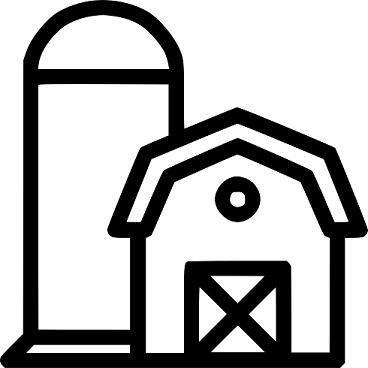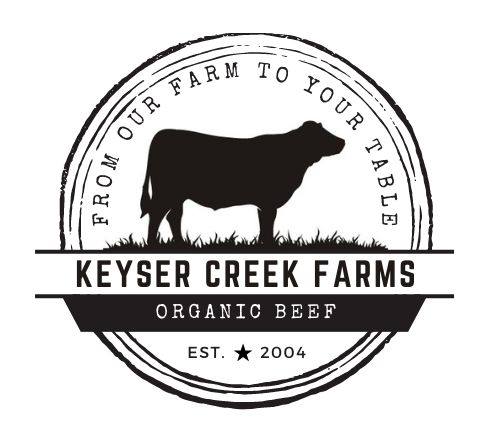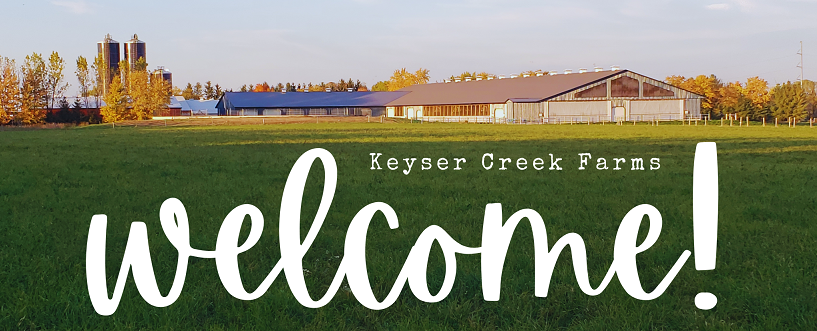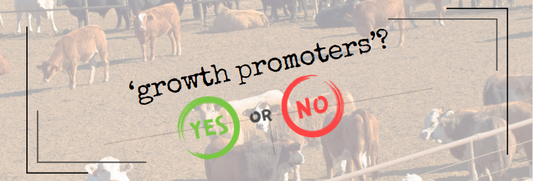Learning Center
We don't want to just sell you beef - we want you to become a confident and informed consumer.
We know that purchasing bulk freezer beef isn't the same as grabbing a few pounds of ground beef from the store. When we want to invest in something important, we research it and do our best to understand what we are choosing and why.
And if you're here, we know that your family and your food are important to you!
With that being said, this is more of an 'Explanations Page' than a quick reference guide
(but we are working on that!).
The answers are thorough, but on target.
farming, in general
Hey Farmer...
What is the difference: cow vs. heifer vs. bull vs. steer?
Generally speaking, everyone sees these big animals in a pasture and goes, "Look! A cow!" It's ingrained in us as little kids looking at our first words books.
As farmers, we need to be a little more specific.
First, they are all cattle, or bovine; but just like other animals the guys and girls have different names - and we separate them other ways too.
All babies are called calves, but we separate them based on sex. Females are heifers, and males are bulls.
We call the females heifers until they have their first calf - that's when we start calling them cows. So, cows are more specifically the mamas. They are always female, and they've given birth to a calf.
Bulls are called bulls their entire life, no matter their age. HOWEVER, we do differentiate when a bull is castrated at a young age - then it is called a steer.
Steers are infertile, and typically much calmer and more docile. Adult bulls can mate and reproduce, and are typically more aggressive.
We choose not to have bulls on our farm because they can be dangerous, and it's not worth the risk with all our kids around.
What breed of steers do you raise?
Yup, steer - not cow. Great, you're learning the language now. (But don't worry - I'll probably switch back and forth too, we all know what we're talking about right?!)
If you've ever seen a pasture full of white and black large spots, they are typically Holsteins, and about 99% of the time they are actually cows. Holsteins are the main dairy breed in Ontario, and across North America. They have a thinner framework and pour most of their energy into making milk, rather than building muscle for meat. That being said, Holsteins still make great beef - and can be the source of delicious and healthy lean or extra lean ground beef. Because we are organic dairy farmers, we do have a barn full of Holstein cows.
A few years ago, though, we decided to start a beef herd, and began breeding and raising our Angus.
More specifically, our beef is an Angus cross. This means the mama is one breed and the papa is another. In our case, our Holstein dairy cow (remember - we are dairy farmers too!) is bred with Angus... and we get a cross. This actually gives us great genetics of animals that are great at converting their food energy (Holstein) and using it to put on lots of muscle (Angus). This might be why our steers 'dress out' about 5% higher than industry standards (aka. we get about 5%+ more meat from our Angus cross than is typical for most farmers).
Because we raise them side by side - they spend their days together - both in the barns and out in the pastures.
Our Angus calves are all black, like their papas - but sometimes we've found white markings on their feet. They're pretty cute!
What is the difference between 'grass-fed' & 'grain-fed'?
This is a HUGE topic, and there is tons of research out there about cattle, feed, and meat production. So, this is just a slice off the steak.
First, grass-fed beef is specifically cattle that spend their days grazing on grass - whether that's a fenced in pasture, or the wide- open ranches out west.
This is a very natural process - and it's the way cattle were designed to eat... to an extent. You see, most of the times when we hear "Grass-fed" we think of cows keeping a lawn nicely trimmed. What most people don't realize is that the pastures they graze are a buffet of plants.
* grasses
* forages
* legumes
* forbs
If beef is 100% grass-fed it means that, after being weaned from their mother's milk, they are only fed grasses and forages, not grains - like corn or barley. Remember: the grass on our lawns is not the only kind! There are many species and varieties that provide a well balanced diet. Sometimes farmers do provide mineral supplements, too - think daily vitamins for cows.
In northern climates like ours - when we can't even see the grass through the snow! - beef farmers will provide large bales of dry grass that they harvested during the summer as the main feed source, while the animals roam the snowy pastures.
Grain-fed beef is when farmers feed cattle a high energy, fattening diet of grains - like corn, barley, and soy - so they will grow faster. This is often during the last few months before they are butchered.
Lots of people actually like grain-fed beef because it tends to have more marbling (intramuscular fat) and is more tender.
Unfortunately, grain-fed operations on huge feedlots bring a lot of negativity to farming. However, there are still lots of smaller, family farms that raise grain-fed beef.
Some people don't pay much attention to how their beef is raised; while others are die hards for one way over the other. In terms of 'gut-health' for the cows, though, grass-fed is definitely what they are designed for.
Is your beef "100% grass-fed"?
Best fed. We're coining the term 'best fed'.
We have spent years, as organic dairy farmers, learning about cows, their digestive system, and how to help them be healthy so that they can reach their full potential. Sounds like a strange 'life-coach' line for bovine, huh? But it's true!
We've noticed that beef farmers traditionally are more laid back when it comes to 'nutrition' - the cows go out to graze, and they kind of just manage themselves.
In the dairy industry farmers are VERY intentional and proactive about what we feed our cows. This is so important to us that we actually hire a nutritionist for our animals! It's true! Not for us, or our kids.... but for our cows.
We put a lot of effort into making the BEST feed possible - and we get help from other professionals to ensure our cows get the best treatment and nutrition possible.
So, what is 'BEST FED'?
1) We seed our pastures with a specific blend of grasses, forages, and legumes. The natural grasses in our pastures can be limited in the variety of nutrients they provide, so we add the variety.
2) We provide daily supplements in their feed - think vitamins for cows.
3) We source non-GMO seed, and use mechanical and organic methods for crop and pest controls. No modified or artificial stuff.
4) We harvest our pastures at a very specific time. Did you know that alfalfa has a much higher energy content right before the flowers bud? If the field starts turning purple - we're late!
5) We do nutrient testing on EVERY harvest of every crop. What does that mean? We sample every harvest and send it to a lab for a nutritional readout. Which means, we pretty much put a nutritional label on every ingredient we feed our cows. It's not random - we know proteins, carbs, mineral % on all our crops.
6) We do grow corn and soy, but only the dairy cows are fed controlled amounts of these grains.
With corn - we specifically grow 'forage varieties', which means bigger leaves and a more tender stalk with fewer cobs and kernels; and you can be sure that all our corn is also certified organic, and free from all the GMOs, sprays, and seed treatments.
For perspective, in 1kg of corn silage, there is only about 25g of actual corn grain. In a daily ration of 18kg, they might receive up to 4kgs of corn silage - which would be about 100g, or 0.5%, of their daily ration.
DAIRY SIDEBAR: Why do you feed them corn silage?
Even though cattle are designed for the outdoors, they still don't love the harsh winter weather we get here in the snowbelt of SW Ontario. Cold stress sets in around -8*C, and even before that the windy, damp winters demand extra energy from the animals.
Small amounts of corn silage are added into our dairy ration to give their bodies the extra energy they need to produce lots of milk, especially during the cold winter months. We don't want there to be a lull or dip in their health due to stressful weather conditions, especially when we have the ability to keep them at optimal health all year round.
Our dairy animals are like elite athletes, so think of the small amount of grain in their diet like a protein bar that helps replenish their energy stores.
That being said - feeding corn silage is a dairy thing... not our grass-fed beef thing - but we still think it's important for you to know!
We have spent a long time trying to figure out what 'best fed' looks like - and the way our farm is rolling right now, I think we're definitely on to something!
Our animals are healthy and happy, strong and, well... delicious! You are what you eat - right?!
I've heard people say that "grass-finished" is what's really important... what's the difference?
That's a great question!
This is getting into the nitty gritty because some people will say that ALL cattle are 'grass-fed' up until a certain point, so what you REALLY need to pay attention to is that the beef is 'grass-finished'.
There's some truth to this.
As mentioned earlier, 'grain-fed' animals can have a very similar diet of grasses and forages up until the last few months of their life. Depending on the farm/ranch, cattle are switched to a diet of 60-80% grain - this is the finishing process that creates extra marbling in the beef.
So, yes - look for the grass-fed AND finished claim (some shorten it to GF&F)....
And YES, you can be sure that we are GF&F!
How does the 'dairy' mentality help you as a beef farmer?
Most people lump farmers into one big category... we're all the same. We think the same, we work the same, we invest the same.
WOAH! So not true!
As dairy farmers, we have a passion for making great feed for our cows. So, we invest a lot of our time, money and energy into 'making hay while the sun shines'! I think this focus on precision nutrition gives our beef animals a huge advantage over other farming methods. We honestly believe that our BEST FED methods are helping make all our cows the healthiest they could possibly be, and that translates into the healthiest beef for you and your family!
Also, as dairy farmers we aim for longevity - meaning we spend EXTRA effort, and money, making sure our cows are happy and healthy because we want them to be around for A LONG TIME! We don't just feed and take care of our cows - we invest in them. Since our beef calves and steers are raised right alongside our dairy calves and heifers - they all get treated the same.
This means we probably spend more money feeding our steers than most beef farmers - but if you are what you eat, then why would we take any shortcuts?
FYI: Our oldest cow was 13 years old - she had 9 babies while she lived here, and was so calm that our kids could ride her!
What does 'cow comfort' mean?
'Cow comfort' is a term that farmers use to describe all the ways that we pamper our animals to make them happy! This is important because stress causes all sorts of health problems in animals (go figure!), so a happy cow is a healthy cow.
Here are a few things that we've done in our barns to increase 'cow comfort:
* cattle brush - an electronic rotating bristle brush that turns on for 30 seconds when they nudge it for an awesome back scratch
* sand bedded stalls - we actually ship sand in, and fill our stalls so when the cows are inside their barn beds are filled with beach sand
* temperature controlled sidewall curtains - our barn is outfitted with weather sensors INSIDE & OUT; the side wall curtains are set to adjust from the top and bottom to keep out wind, rain, drafts, hot sun, cold, etc...
* maternity pens - an extra spacious area with deep, comfy bedding; we even keep a camera on these pens to keep on eye on our mamas (just in case they need help)
* fans - rows of fans line our barn and automatically turn on when temperatures rise above 15 in the summer, keeping them cool, comfortable, and happy.
* deluxe feed stalls - we've laid cushioned rubber flooring for them to stand on; dividers between them so there's "no pushing at dinner"; and an epoxy coating on the feed bunker - like have a smooth plate to eat from

Beef Primals
Here's a basic diagram of the eight primal sections of a steer.
(In this diagram the Loin primal is subdivided into 5 sections - I bet you can figure out which ones!)
You KNOW I'm all about that beef
Buying bulk beef
What kind of cuts will I get when I buy a Whole Beef? And how much?
Consistently across the board with any bulk beef sales, the cuts are typically in a weight ratio of 1/2 steaks & roasts, and 1/2 ground beef - generally speaking.
We've noticed, over the years, that our beef animals typically weigh out quite heavy (they give A LOT of meat), so the weight for our different bulk options are guaranteed to be:
WHOLE = 400lbs
HALF = 200lbs
QUARTER = 100lbs
EIGHTH = 50lbs
We have a great relationship with our butcher, and over time we've come to know the cuts he typically gives us.
That being said - he does have a certain amount of... "creative license", I suppose you could say. For example, how many T-Bone steaks does he cut, versus deboning it and creating the tenderloin and striploin steaks? We've done well by him over the years and we trust his judgement!
There is also the opportunity to make custom requests, which we can pass along to our butcher. For example, if you'd like your tenderloin as a roast, rather than medallions; or you'd specifically like the brisket or flat iron steak, as part of your order. You can also request thicker cut steaks, too. We're happy to help make ordering bulk beef a positive (and delicious!) experience.
(To understand more about where the different cuts come from - read the FAQs on 'primals')
Here's a recent example of one of our steers that just came back from the butcher:
**This is # of cuts (not weight!)
STEAKS (~1-1.5lbs each)
Tenderloin - 10
Ribeye - 28
T-Bone - 26
Top Sirloin - 12
Sirloin Tip - 10
Blade - 18
Round - 14
ROASTS (~3-4lbs each)
Top Sirloin - 3
Chuck - 8
Rump - 6
Eye of Round - 4
Ground Beef (1lb each) - 207
OTHER
Stewing Beef - 7
Heart
Liver
Other cuts that we typically get are striploin steaks, or prime rib roasts.
I hear the term 'hanging weight' a lot - what does it mean?
I'm actually going to give you a couple terms, so you can compare them and keep them straight.
1) Live weight (LW)
This is how much the steer weighs when it walks on the trailer at our farm to head to the butchers.
2) Hot hanging weight (HHW)
This is the weight of the cow after the initial butchering is done. The carcass is still 'warm', but the hide and organs are removed, and it's about to be hung up in the freezer. This is sometimes called the 'dressed weight', or 'carcass weight'.
This is typically about 60% of the live weight.
3) Freezer Weight (FW)
Beef hangs in a freezer for, typically, 12-14 days. During this time, it dehydrates, and often loses 3-5% of the hanging weight.
4) Packaged Weight (PW)
The first step is to cut the main frozen sections into 'primal cuts'. There are 8 primal cuts in a beef, but we'll explain the details on that elsewhere.
This is where the true craftsmanship of the butcher takes the primal cuts and turns them into the delicious steaks and roasts we enjoy!
This means trimming off excess fat, gristle or cartilage, and deboning certain cuts.
This process will drop the final product to about 70% of the freezer weight - or 40% of the original live weight of the steer.
Can you break down the different weights?
First, please understand that this is just a super simple example with nice round weights. These numbers change with EVERY SINGLE steer.
Difference in live weight alone could be due to the age, genetics, diet, and 'lifestyle' of each animal. (Yes, some are just lazy)
Let's say the steer goes in at 1000lbs. The industry average is 60% hanging weight, or 'dressed weight'. That means 600lbs on hooks.
This % could change slightly due to how heavily boned the animal is, or even if it just ate a lot before getting on the trailer. Our animals have typically been 'dressing out' at 65% - which means we have a higher percentage of meat per cow.
From here, the hooks hang in the freezer for 12-14 days. The dehydration concentrates the flavour, and tenderizes the meat. This loss is around 3-5 %. (We'll use 5% for easy figuring)
So, the carcass goes in the freezer at 600lb, but comes out at 570lbs.
From there, the butcher takes the sides of beef and cuts them down into the ''primals" - eight of them. (more on that later)
The final packaged weight has quite a bit of variation depending on what cuts the butcher takes out, or the buyer requests.
For example - if the buyer (us, the farmer - or you, the end customer) wants everything boneless... well! That's a huge weight difference! Do you want T-Bone steak, or tenderloin and striploin steaks? It could mean as much as 20% difference of the hanging weight if you go completely boneless.
But don't worry - that weight can still be used for good! Extra trimmings may end up in the ground beef, and all the bones are great for soup bones, aka. bone broth (or, do you know someone with a dog? New best friends!)
At the end of the day the typical packaged weight is approximately 40% of the original live weight of the cow; but as you can see, there's LOTS of room for variation.
So, here's the recap:
Live weight: 1000lbs
Hanging weight: 600lbs
Freezer weight: 570lbs
Packaged weight: 400lbs
There is a lot of variability between the live weight, hanging weight, and packaged weight; if you want a great in-depth explanation check out this resources from the Institute of Agriculture and Natural Resources (University of Nebraska-Lincoln): How Many Pounds of Meat Can We Expect From A Beef Animal? | UNL Beef
Some farmers charge by hanging weight? How does that work?
Most farmers sell whole beef by the Hanging Weight (remember ~60% of the Live Weight). This makes the price very specific to the animal, which has its pros and cons.
The price initially looks a lot cheaper per pound because it hasn't gone through the freezer, or been carved and packaged yet. This could swing in your favour… or not.
The steer might weigh heavy hanging, but convert to packaged beef poorly if it has a large bone structure – so you might ‘overpay’ per pound. On the other hand, you might get a smaller framed animal that carries a lot of meat and ‘dresses’ well - lucky you!
Additionally - if you're paying hanging weight then you're paying for the bones. That's no problem if you are someone who is going to use them. Lots of people take them and make bone broth, or owners of dogs make their pets very happy. But if you don't... that's a sunk cost - something you pay for, but don't use - which makes the average price of your meat actually go up.
In our experience, most people don't actually want (or have space for) the huge volume of bones - they'd rather pay a final packaged weight, and concentrate their money on the meat.
Honestly, it’s just a bit of a gamble.
Generally, though, you are guaranteed that every pound of beef coming off that steer is going to your freezer. It’s just that the weight and price will fluctuate.
So, here at Keyser Creek Farms, we’ve chosen a different route because we have found most people are more comfortable purchasing when they know EXACTLY what they are getting.
If there is so much variability - why is your Whole Beef exactly 400lbs?
GREAT QUESTION!
You're absolutely right - we can't guarantee that a whole beef will package out perfectly at 400lbs. So why would we sell it that way?
Because farming is a high-risk business – but eating shouldn’t be.
Our goal here is consistency in product and pricing – so that you know what you’re going to get and how much it will cost. We understand that investing in bulk beef is not the same as grabbing a few pounds of hamburger at the grocery store, and we have found most people are more comfortable purchasing these quantities when they know EXACTLY what they are getting and what the final price will be.
I know I would be!
For example, if you are banking on a specific amount of beef or a guaranteed price point, that might be hard to make happen in reality. Getting an extra 50lbs might not fit in your freezer, or adding another $250 to the final bill might not be feasible.
Since we know our animals so well, and we've been doing this for a while - we know that we'll typically get back right around 400lbs from our animals. We decided the best way to serve our customers is to be precise and stable.
We guarantee 400lbs of premium quality organic beef for $12.97/lb.
Why do I have to put down a deposit?
Well, mainly because we’re dealing with a live animal here.
A deposit is a customer’s way of committing to the final product: packaged beef. But the steps along the way are real, and irreversible.
Once we ship a steer to the butcher, we need to be sure that there is a home for that packaged beef.
From the time of shipping out to the time the beef is at your doorstep can be around 3-4 weeks (remember, the sides hang in the freezer at the butcher shop for 12-14 days). If a customer decides to change their mind half way through – what do we do with 400lbs of meat here at the farm?
We’re built to raise animals – to feed them, house them, and care for them – but we’re not a super sized cold storage!
What is the timeline of my Whole Beef order?
Great question, and it can vary based on hook reservations.
What does that mean?
Farmers 'reserve hooks' at their local butcher shops (like booking an appointment time) - this way they can make sure there is staff and space available for each animal that comes in.
Right now, we have hooks reserved ongoing twice a month, so that we have a consistent opportunity to process our animals.
That being said, if you happen to put down a deposit the day after we just shipped, it will be another 2 weeks before we can send your steer to the butcher.
We will get in contact with you right after you place a deposit to give you an estimated timeframe.
At the butcher, it will be processed that day, and hang for 12-14 days. When the beef is cut and packaged, we will get a call that the order is ready - that's when we'll contact you again.
We will have orders back home and shipped out to customers the next Monday or Tuesday.
*DELIVERY - you can expect your frozen beef within 2 days of it being shipped from our farm. We use courier services (not Canada Post) to ensure great delivery service.
**ON-FARM PICK UP: Call us old fashioned, but we still like to meet the people we sell to - if we can. We also recognize that picking up reduces the need for shipping expenses, so....
If you are able to pick your beef order up on farm (aka. you come here, see the barns, and say hello!), we will give you $$$ off THIS order.
What are 'PRIMALS'?
Sounds caveman-ish, doesn't it?
The sides of beef are cut down into smaller (but still pretty big!) sections called primals. Check out the image above - it's super helpful for visualizing what we're talking about here.
There are eight:
1. Chuck
2. Rib
3. Loin
4. Round
5. Flank
6. Plate
7. Brisket
8. Shank
The front half of the steer is called the forequarter: it includes the Chuck, Rib, Plate, and Brisket primals, as well as 2 of the Shanks.
The hindquarter, or the back half, has the Loin, Round, Flank, and 2 Shanks.
Each primal has 'subprimal cuts' (a smaller section), and then 'portion cuts' - these are the steaks and roasts that we are familiar with.
WHY IS THIS IMPORTANT?
Well... if you understand the primals of the animal, then you can see how different it could be when you order a 1/2 Beef or 1/4 Beef. Which is why we sell our bulk beef as "mixed" shares - meaning all the cuts are divided equally into four equal shares, rather than sell LITERAL quarters.
What is a "mixed" Quarter?
As you can imagine, you can only get certain cuts from certain primals.
For example, most of our favourite steaks come from the Loin (striploin, sirloin, tenderloin... makes sense, right?) - but delicious, sticky BBQ ribs obviously only come from the Rib. So, do you want the front half with the ribs or the back half with the premium steaks?
I know what you're thinking... "BUT I WANT BOTH!"
We know!
So, here at Keyser Creek Farms, we decided to keep it super simple and sell bulk beef as mixed quarters and by a fixed weight.
The term "MIXED" means we don't sell literal quarters of the carcass; instead, we take all of the cuts and evenly divide them into the smaller amounts, while maintaining variety and proportions.
For example, if the whole beef brought back 28 T-bone steaks, each 1/4 would receive 7 of them, or a 1/2 would get 14. Easy math, right? This way, you still get cuts from across the entire beef. Ribs & steak - perfect!
We wouldn't want you to miss out!
Shipping Options
-

ON FARM PICKUP
Map usWe'll contact you to schedule a convenient time to pick up your order - and we hope you'll leave enough time for a barn tour!
Also, when you choose to pick up your bulk beef shares on-farm, you may qualify for
$$CASH BACK$$ -

SHIP TO HOME
We pack all our products in reusable/recyclable packaging - including insulated liners - to ensure your beef shows up fast and frozen!
We use local courier services, and always ship orders Mondays through Wednesdays to ensure your package doesn't get caught in transit over the weekend.
Your beef should arrive in 1-2 days from leaving the farm.
All orders over $250 receive FREE SHIPPING. -

EXTRA INFO
Shipping MapKeyser Creek Farms is located in a small village in Southwestern Ontario, called Keyser.
Half way between London and Sarnia, we are easy to get to - only 5 minutes north of the 402 highway
(and yes - we're on a paved road!)
**OUR COURIER HAS LIMITED NORTHERN SERVICE
Please see our map for boundaries, and inquire for a shipping quote.
What do you want to know?
If you have any questions that aren't answered here - just contact us and we'll get back to you.






